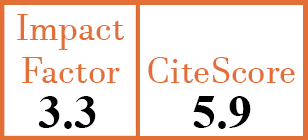Environmental Rheumatology
Interaction of HLA-DRB1 shared epitope and smoking on the development of anti-citrullinated protein antibody positive rheumatoid arthritis in Greek patients
E.N. Mole1, A.E. Tarassi2, A.G. Tsirogianni3, T.E. Athanasiades4, V.E. Kitsiou5, D.I. Kouniaki6, S.V. Gazi7, P.G. Vlachoyiannopoulos8
- Department of Rheumatology, KAT General Hospital of Attica, Athens, Greece. evamole34@gmail.com
- Department of Immunology-Histocompatibility, Evangelismos General Hospital, Athens, Greece.
- Department of Immunology-Histocompatibility, Evangelismos General Hospital, Athens, Greece.
- Department of Immunology-Histocompatibility, Evangelismos General Hospital, Athens, Greece.
- Department of Immunology-Histocompatibility, Evangelismos General Hospital, Athens, Greece.
- Department of Immunology-Histocompatibility, Evangelismos General Hospital, Athens, Greece.
- Department of Rheumatology, KAT General Hospital of Attica, Athens, Greece.
- Department of Pathophysiology, School of Medicine, National and Kapodistrian University of Athens, Greece.
CER18782
2025 Vol.43, N°9
PI 1541, PF 1547
Environmental Rheumatology
Free to view
(click on article PDF icon to read the article)
PMID: 40737047 [PubMed]
Received: 31/03/2025
Accepted : 02/07/2025
In Press: 25/07/2025
Published: 18/09/2025
Abstract
OBJECTIVES:
Rheumatoid arthritis (RA) is a complex, multifactorial autoimmune disease, whose aetiopathogenesis involves genetic and environmental factors. The aim of this case-control study is to confirm the impact of interaction of genetic and environmental factors in the pathogenesis of RA in Greek smoker and non-smoker patients.
METHODS:
We assessed the effects of shared epitope (SE) alleles and smoking on the presence of ACPA autoimmunity in three hundred Greek patients with longstanding RA (150 smokers and 150 non-smokers). Three hundred and forty-six Greek blood donors volunteers and hospital personnel served as controls.
RESULTS:
An increased frequency of HLA-DRB1 *01:01, *10:01, *04:04 and *04:05 alleles, as well as the protective role of *04:03 allele in Greek patients were confirmed during comparison with controls. The presence of any SE influenced the development of RA (OR: 4.37[3.13-6.11], p<0.001). A strong effect for ACPA production was observed in individuals carrying any SE allele (OR: 4.3[2.57-7.22], p<0.001). Single SE carriers in combination with smoking had an increased risk of developing ACPA-positive RA (OR: 6.53[1.47-28.91], p=0.013), which further increased in smokers with a double gene copy (OR: 15.27[1.39-167.52], p=0.026). The strongest interaction, with regard to ACPA-positive RA, was observed in individuals that possessed the HLA-DRB1 *01:01 (OR: 12.55[1.32-119.35], p=0.028) SE allele, whereas the combination of SE genes and smoking did not influence the risk of ACPA-negative RA (OR: 2.01[0.76-5.26], p=0.15).
CONCLUSIONS:
We identified that smoking and the presence of SE alleles increased the risk of developing ACPA-positive RA, indicating a strong genetic-environmental correlation that probably triggers the pathogenesis of RA in Greek patients.


